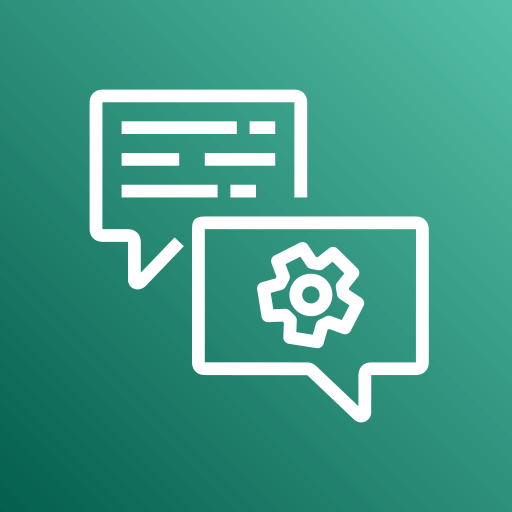AWS AI Services: Don’t build it, leverage it
After diving deep into foundation models and generative AI, let me share something that might save you money: You probably don't need to build your own AI models. AWS has already done it for you.
Coming from the Microsoft world, I was used to Azure Cognitive Services. But when I discovered the breadth of AWS AI Services, I realized why so many companies choose AWS for their AI journey. These aren't just demos - they're production-ready services processing billions of requests daily.
Here's the thing: That custom computer vision model you're thinking about building? Amazon Rekognition probably already does it. That NLP pipeline you're architecting? Amazon Comprehend has you covered. Let's explore when to use these pre-built services and when you actually need to go custom.
The AWS AI/ML Stack: Understanding Your Options
Before we dive into individual services, let's understand where AI Services fit in the AWS stack. AWS organizes its AI/ML offerings into three distinct layers:
ML Frameworks Layer - Amazon SageMaker for building custom models
AI/ML Services Layer - Pre-trained, task-specific services (our focus today)
Generative AI Layer - Foundation models and generative AI tools
The AI/ML services layer is where most organizations should start. These services provide ready-to-use AI capabilities without requiring extensive infrastructure management or specialized ML expertise. You get the power of deep learning without the complexity.
The Philosophy: Start Here First
Before you even think about SageMaker or training custom models, ask yourself: "Does AWS already have a service for this?" The answer is usually yes. These services are:
Pre-trained on massive datasets you could never afford to compile
Constantly improved by AWS without you lifting a finger
Pay-per-use with no upfront costs
Production-ready with built-in scaling and reliability
Integrated with other AWS services seamlessly
I learned this lesson the hard way. Spent two weeks building a custom text classification model only to discover Amazon Comprehend's custom classification feature did exactly what I needed in 2 hours.
Vision Services: Amazon Rekognition
Amazon Rekognition uses proven, highly scalable deep learning technology that requires no ML expertise to use. It's the Swiss Army knife of computer vision, handling both images and videos.
What It Actually Does
Object and Scene Detection: Rekognition can identify thousands of objects (like vehicles, pets, or furniture) and scenes (like sunset, beach, or city). Each detection comes with a confidence score, so you can set thresholds based on your use case.
Facial Analysis and Recognition: Beyond basic face detection, Rekognition analyzes facial attributes including:
Emotions (happy, sad, angry, confused, disgusted, surprised, calm)
Age range estimates
Gender identification
Facial landmarks (eye positions, nose, mouth)
Face quality (brightness, sharpness)
Comparison between faces (similarity scoring)
Text Detection: Extracts text from images while maintaining location and orientation information. Perfect for reading street signs, license plates, or product labels in real-world applications.
Content Moderation: Automatically detects inappropriate, unwanted, or offensive content. This includes various categories with confidence scores, allowing you to filter content based on your community guidelines.
Celebrity Recognition: Identifies thousands of celebrities in images and videos, useful for media and entertainment applications.
Real-World Example Implementation:
Instead of building your own models:
python
# Object and scene detection
response = rekognition.detect_labels(
Image={'S3Object': {'Bucket': bucket, 'Name': photo}},
MaxLabels=10,
MinConfidence=90
)
# Face analysis
face_response = rekognition.detect_faces(
Image={'S3Object': {'Bucket': bucket, 'Name': photo}},
Attributes=['ALL'] # Returns all facial attributes
)
# Content moderation
moderation_response = rekognition.detect_moderation_labels(
Image={'S3Object': {'Bucket': bucket, 'Name': photo}},
MinConfidence=60
)
Use Cases:
User verification and authentication
Photo organization and search
Content moderation for user-generated content
Public safety and security applications
Accessibility features for visually impaired users
Language Services: The NLP Powerhouse
Amazon Comprehend: Understanding Text at Scale
Comprehend is like having a team of linguists analyzing your text 24/7. It goes beyond simple keyword extraction to actually understand meaning and context. It uses ML and NLP to uncover insights and relationships in unstructured text. No ML experience required.
Core Capabilities:
Language Detection: Identifies the dominant language from 100+ languages
Entity Recognition: Extracts key entities (people, places, organizations, dates, quantities, percentages, currencies, and more)
Key Phrase Extraction: Identifies the key phrases that are most relevant
Sentiment Analysis: Determines the emotional tone (positive, negative, neutral, mixed) with confidence scores
Syntax Analysis: Tokenization and parts of speech tagging
Topic Modeling: Automatically organizes text collections by topic
Custom Classification: This is where Comprehend shines for business use. Train custom classifiers with your own categories. Perfect for routing support tickets, categorizing documents, or analyzing customer feedback according to your business needs.
Real Example: Customer feedback analysis
# Analyze customer review
response = comprehend.detect_sentiment(
Text="The product quality is excellent but shipping was terrible",
LanguageCode='en'
)
# Returns: MIXED sentiment with detailed scores
entities = comprehend.detect_entities(
Text="I bought this from the Seattle store last Tuesday",
LanguageCode='en'
)
# Extracts: Location (Seattle), Date (last Tuesday)
Amazon Textract: Documents Become Data
Textract isn't just OCR - it understands document structure. Tables, forms, relationships between fields - it extracts them all while maintaining context.
Key Differentiators:
Forms Processing: Identifies form fields and their associated values
Table Extraction: Maintains table structure with rows and columns
Handwriting Recognition: Processes handwritten text
Selection Elements: Identifies checkboxes and option buttons
Document Analysis: Understands document hierarchy and reading order
Why It Matters: Traditional OCR gives you text. Textract gives you understanding. It knows that "Name:" is a field label and "John Smith" is its value. This structured extraction transforms document processing workflows.
Amazon Translate: Neural Machine Translation
Amazon Translate provides neural machine translation across 75 languages with several enterprise features:
Advanced Features:
Custom Terminology: Ensure brand names and technical terms translate consistently
Active Custom Translation: Customize translation output for your domain
Formality Control: Adjust tone for your audience
Profanity Masking: Automatically handle inappropriate content
Document Translation: Translate entire documents while preserving formatti
Speech Services: Audio Intelligence
Amazon Transcribe: Every Word Matters
Amazon Transcribe is an automatic speech recognition (ASR) service that goes beyond basic transcription.Transcribe turns audio into accurate, searchable text. But it's the business features that make it powerful:
Key Capabilities:
Automatic Punctuation: Adds punctuation to raw speech
Speaker Diarization: Identifies and labels different speakers
Custom Vocabulary: Improves accuracy for domain-specific terms
Vocabulary Filtering: Mask or remove profane words
Automatic Language Identification: Detects the spoken language
Real-time Transcription: Stream audio and receive text immediately
Medical Transcribe: HIPAA-eligible variant with medical terminology
Business Applications:
Transcription of customer service calls for analysis
Generation of subtitles for video content
Meeting transcription with speaker identification
Content analysis on audio and video files
Compliance recording and searchable archives
Amazon Polly: Computers That Speak Naturally
Amazon Polly synthesizes speech that's nearly indistinguishable from human voices using advanced deep learning technologies.
Standout Features:
Neural TTS Voices: Highest quality, most natural sounding
Multiple Languages and Voices: Dozens of lifelike voices across languages
SSML Support: Fine-tune speech with pronunciation, emphasis, pauses
Speech Marks: Synchronize speech with visual elements
Lexicon Support: Customize pronunciation of specific words
Real Implementation Success: The Washington Post uses Polly to convert written articles into audio, reaching commuters and making content accessible to visually impaired readers. They process thousands of articles monthly at a fraction of the cost of human narration.
Conversational AI: Amazon Lex
Lex builds conversational interfaces using the same tech as Alexa. But here's what makes it enterprise-ready:
Smart Capabilities:
Intent Recognition: Understands what users want, not just keywords
Slot Filling: Gathers required information naturally
Context Management: Maintains conversation state
Multi-turn Dialogs: Complex workflows feel natural
Lambda Integration: Execute business logic seamlessly
Advanced Features:
Built-in integration with AWS services
Support for 8+ languages
Voice and text interfaces
Session management and context carry-over
A/B testing capabilities
Success Story: A major pizza chain implemented Lex for ordering, handling 40% of orders through the bot. Customer satisfaction increased because the bot never mishears orders and remembers preferences.
Search and Personalization
Amazon Kendra: Enterprise Search Reimagined
Kendra uses ML to actually understand search queries, not just match keywords. It reads documents like a human would.
What Makes It Different:
Natural Language Queries: Ask questions in plain English
Contextual Answers: Returns specific answers, not just documents
Suggested Answers: Highlights the most relevant passages
Incremental Learning: Improves based on user interactions
Access Control: Respects existing document permissions
Connectors: Pre-built connectors for SharePoint, Salesforce, ServiceNow, RDS, OneDrive, and more
Implementation Tip: Kendra isn't just search - it's understanding. When users ask "What's our remote work policy?", Kendra finds the specific policy section, not just documents mentioning "remote work."
Amazon Personalize: ML-Powered Personalization
The same technology Amazon uses for product recommendations, available as a service.
Core Capabilities:
User Personalization: Real-time recommendations based on user behavior
Similar Items: Find related products or content
Personalized Ranking: Re-order search results for each user
User Segmentation: Automatically discover user segments
How It Works:
Provide interaction data (views, clicks, purchases)
Add item catalog (optional but recommended)
Include user demographics (optional)
Personalize handles all the ML complexity
Get recommendations via API
Key Insight: No ML expertise required. Personalize automatically selects algorithms, trains models, and optimizes for your specific use case. Updates happen in real-time as new interactions occur.
Specialized Services
Amazon Forecast: Time Series Predictions
Uses ML to deliver highly accurate forecasts, up to 50% more accurate than traditional methods.
Use Cases:
Demand planning
Financial planning
Resource planning
Energy demand forecasting
Traffic predictions
Amazon Lookout Series: Anomaly Detection Suite
Amazon Lookout for Equipment: Detects abnormal equipment behavior using sensor data. It learns your equipment's normal operating patterns and alerts you to anomalies that could indicate potential failures.
Predictive maintenance
Reduced downtime
No ML expertise needed
Integrates with industrial IoT systems
Amazon Lookout for Metrics: Automatically detects anomalies in business metrics like revenue, user signups, or transaction volumes.
Monitors thousands of metrics simultaneously
Learns seasonal patterns and trends
Provides ranked anomalies by severity
Integrates with CloudWatch, S3, RDS
Amazon Lookout for Vision: Detects visual anomalies in manufactured products using computer vision.
Quality inspection on production lines
Identifies defects like cracks, dents, incorrect colors
Trains on as few as 30 normal images
Real-time inference at production speeds
Real Impact Example: A manufacturer using Lookout for Vision detected product defects that were invisible to human inspectors, preventing $2M in potential recalls. The system identified microscopic cracks that only showed under specific lighting conditions.
AWS DeepRacer: Learn Reinforcement Learning
A 1/18th scale autonomous race car for hands-on RL learning. It integrates hardware, simulation, and cloud-based tools, offering users a fun and competitive way to explore AI. The platform allows users to train models that guide a small autonomous car to efficiently navigate a track using their own reinforcement learning algorithms.
Teaching complex ML concepts:
Reward function design
Hyperparameter tuning
Model training and evaluation
Real-world RL applications
Integration with the Broader Stack
These AI services don't exist in isolation. They integrate seamlessly with the broader AWS stack:
With SageMaker: When pre-built services don't meet your needs, graduate to SageMaker for custom models. You can even use AI services for data preparation before custom training.
With Bedrock: Combine traditional AI services with generative AI. Use Comprehend to analyze text, then Bedrock to generate responses based on the analysis.
With Amazon Q: Q Developer accelerates coding with ML-powered recommendations, increasing developer productivity by 57% in studies.
Advantages of AWS AI Services
1. Accelerated Development
Integrate AI in hours, not months
No ML expertise required
Pre-built integrations and SDKs
Extensive documentation and examples
2. Scalability Without Complexity
Handle millions of requests automatically
Global infrastructure ensures low latency
No infrastructure management needed
Automatic scaling based on demand
3. Cost Optimization
Pay only for what you use
No upfront investments
Avoid the cost of ML teams and infrastructure
Predictable pricing models
4. Continuous Improvement
AWS continuously updates models
New features added regularly
Performance improvements automatic
Security updates handled by AWS
The Decision Framework
Here's my framework for choosing between AI services and custom models:
Use AI Services When:
The service does 80%+ of what you need
You need results in days, not months
You don't have ML expertise in-house
Cost predictability matters
You need to scale quickly
Build Custom When:
You have proprietary data that gives competitive advantage
The problem is unique to your domain
You need complete control over the model
Existing services don't meet accuracy requirements
Compliance requires on-premises deployment
Cost Reality Check
Let's break down the actual costs with token-based and request-based pricing:
Token-Based Services (Bedrock, Q Developer):
Pay per token (roughly 4 characters)
Input tokens often cheaper than output tokens
Costs can escalate with long conversations
Cache responses when possible
Request-Based Services (Most AI Services):
Rekognition: $0.001 per image (first 1M/month)
Comprehend: $0.0001 per unit (100 characters)
Transcribe: $0.024 per minute
Polly: $4 per 1M characters
Provisioned Throughput Options: Some services offer provisioned capacity for predictable workloads:
Guaranteed performance
Better for high-volume, consistent usage
Higher cost but predictable
Custom Model Costs: When you need custom models:
Training: $1,000 - $100,000+ depending on complexity
Inference endpoints: $50 - $5,000+/month
Data labeling: $0.012 - $0.036 per label
Ongoing maintenance and retraining
Integration Patterns
The real power comes from combining services:
Document Processing Pipeline: Textract (extract) → Comprehend (understand) → Translate (localize) → S3 (store)
Content Moderation Pipeline: Rekognition (images) → Transcribe (audio) → Comprehend (text) → Human review (edge cases)
Customer Service Automation: Lex (chat) → Comprehend (sentiment) → Personalize (recommendations) → Human handoff (complex issues)
Practical Tips
Start Small: Pick one service, one use case. Prove value before expanding.
Set Confidence Thresholds: Most services return confidence scores. Use them to route edge cases for human review.
Implement Caching: Don't process the same content twice. Cache results in DynamoDB or ElastiCache.
Batch When Possible: Many services offer batch operations at lower costs.
Monitor Usage: Set CloudWatch alarms for unexpected usage spikes.
Use Service Limits: Understand throttling limits and request increases before production.
Enable Logging: CloudTrail for API calls, CloudWatch for metrics.
Common Pitfalls to Avoid
Assuming 100% Accuracy: These services are very good, not perfect. Plan for confidence thresholds and human review.
Ignoring Compliance: Some services aren't available in all regions. Check compliance requirements first.
Over-Engineering: Don't build complex workflows if a simple service call works.
Under-Estimating Volume: That demo with 100 images? Production might be 100 million. Plan accordingly.
Key Takeaways for the Exam
Know service mappings: Which service for which use case
Understand pricing models: Token vs request-based, on-demand vs provisioned
Remember integration patterns: Services work better together
Cost optimization strategies: Caching, batching, confidence thresholds
Decision criteria: When to use services vs custom models
Service limits and scaling: Automatic vs manual scaling options
Security features: Encryption, IAM integration, VPC endpoints
What's Next?
Now that you understand the pre-built AI services, our next post will dive into Amazon SageMaker - for when you actually do need to build custom models. We'll explore when and why you'd graduate from AI services to custom ML, and how SageMaker makes it (relatively) painless.
But remember: Always check if an AI service exists first. The best model is the one you don't have to build. Start with AWS AI Services, graduate to custom only when necessary. Your future self (and your AWS bill) will thank you.
Resources:
Remember: These services are production-ready and battle-tested. Netflix uses Personalize. The NFL uses Rekognition. Intuit uses Comprehend. If it works for them, it'll work for you.
















